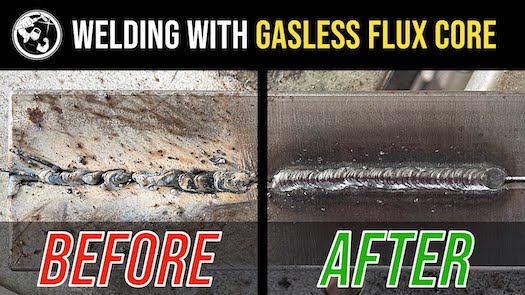Gasless Flux Core Practice
Hey if you missed the first video on setting up the machine and the #1 BIG mistake most people make on flux core, here it is
In an earlier video, I set up a mig machine from scratch and showed how important it is to make sure the right polarity is used.
I had an old spool of Lincoln nr211 .035" that was pretty rusty so I stripped off several layers of wire until I hit clean wire underneath.
The machine I used was a hobart 210mp and hobart usually has pretty good settings on the chart inside the wire feeder door.
After you have watched that first video on gasless flux core for beginners, and have your machine set on the correct polarity for gasless flux core (DCEN)...and your wire feed tension set correctly, its time to get some practice.
The best and cheapest practice is simply padding beads.
Padding beads is stacking one bead half way over the previous bead.
I sometimes order 11ga steel practice plates from the James F Lincoln Foundation because its convenient and pretty cheap (unless you live outside the USA and then shipping is usually expensive). JFLF.org is a non profit arm of Lincoln Electric and sells metal kits for boy scout merit badge welding.
1/8" thick steel is thick enough to practice on and the settings you dial in on 1/8" generally work very well on 1/8" wall square tubing or angle iron.
You can use practically any scrap metal 1/8" and thicker for this practice drill.
There are just a few things to pay close attention to when practicing your gasless flux core welding.
- Stickout = the distance the wire sticks out past the contact tip to the arc and should be kept to around 5/8" For .035" NR211 flux core wire
- Gun angle should be a slight drag angle but is pretty forgiving as long as your stickout is close.
- Travel speed should be consistent and just fast enough to avoid excess build up of weld metal
I prefer to pull the puddle with about a 15-20 degree angle but there are times when that is not possible (like for tight areas on a tractor bracket)
There is an old saying amongst old timer welders that goes like this...
"if it has slag, you drag"
What that means is that a drag angle helps keep the slag pushed back behind the arc.
















